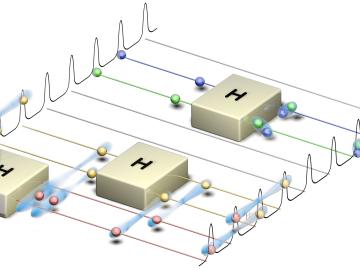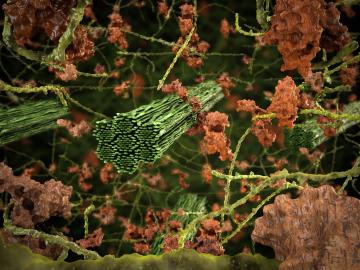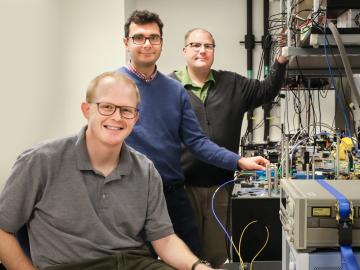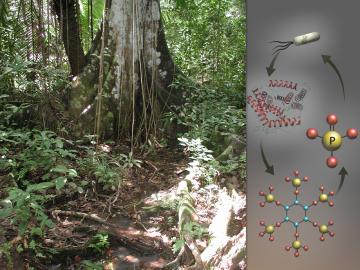Filter News
Area of Research
- (-) Supercomputing (17)
- Advanced Manufacturing (4)
- Biological Systems (4)
- Biology and Environment (1)
- Building Technologies (2)
- Chemistry and Physics at Interfaces (3)
- Clean Energy (36)
- Climate and Environmental Systems (1)
- Computational Biology (1)
- Energy Frontier Research Centers (5)
- Fuel Cycle Science and Technology (1)
- Functional Materials for Energy (3)
- Geographic Information Science and Technology (1)
- Isotope Development and Production (1)
- Materials (44)
- Materials Synthesis from Atoms to Systems (2)
- Materials Under Extremes (3)
- Neutron Science (13)
- Nuclear Science and Technology (9)
- Nuclear Systems Modeling, Simulation and Validation (1)
- Quantum Condensed Matter (1)
- Reactor Technology (1)
- Sensors and Controls (1)
- Transportation Systems (2)
Media Contacts


Seven researchers from the Department of Energy’s Oak Ridge National Laboratory have been chosen by the Innovative and Novel Computational Impact on Theory and Experiment, also known as INCITE, program to lead scientific investigations that require the nation’s mo...


The US Department of Energy’s Oak Ridge National Laboratory is once again officially home to the fastest supercomputer in the world, according to the TOP500 List, a semiannual ranking of the world’s fastest computing systems.

In an effort to reduce errors in the analyses of diagnostic images by health professionals, a team of researchers from the Department of Energy’s Oak Ridge National Laboratory has improved understanding of the cognitive processes

The U.S. Department of Energy’s Oak Ridge National Laboratory today unveiled Summit as the world’s most powerful and smartest scientific supercomputer.

Scientists at the Department of Energy’s Oak Ridge National Laboratory are the first to successfully simulate an atomic nucleus using a quantum computer. The results, published in Physical Review Letters, demonstrate the ability of quantum systems to compute nuclear ph...



A team of researchers from the Department of Energy’s Oak Ridge National Laboratory has married artificial intelligence and high-performance computing to achieve a peak speed of 20 petaflops in the generation and training of deep learning networks on the




